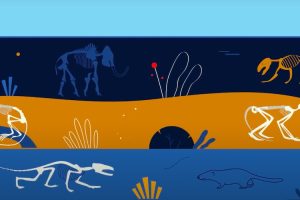Tropical Cyclone
Meteorologist Chris Brierley on the tropical cyclogenesis, the distribution of tropical cyclones on the planet...

On February 16, 2015 Nature published a paper “Isotopic evidence for biological nitrogen fixation by molybdenum-nitrogenase from 3.2 Gyr” about new dating of most abundant air compound assimilation emergence. We have asked leading author of this research, Dr. Eva Stüeken from University of Washington, to comment on this work.
Nitrogen is an essential element for all life on Earth, because it is an important component of DNA and proteins. The major nitrogen reservoir is N2 gas in the air, but most organisms are not able to access this form of nitrogen. Humans, for example, have to obtain all their nitrogen from organic compounds in food. However, at the bottom of the food chain some bacteria have figured out a way to metabolize atmospheric N2 gas and convert it into organic nitrogen. This process is called ‘nitrogen fixation’, and it ultimately supplies the Earth’s biosphere, including us, with essential nitrogen compounds. To be able to perform nitrogen fixation, those bacteria had to develop a special enzyme, called ‘nitrogenase’, that reduces N2 to ammonium. In previous studies researchers tried to reconstruct the genetic history or pedigree of this nitrogenase enzyme and concluded that it was first invented sometime between 1.5 and 2.2 billion years ago. This conclusion poses a problem, because we have good evidence that life has existed on Earth for at least 3.5 billion years. So if nitrogenase only evolved 2.2 billion years ago, then for over a billion years organisms would have been dependent on abiotic sources of metabolizable nitrogen, such as lightning or volcanism, where small amounts of N2 react to nitrate or ammonium. Hence the biosphere may have been quite restricted.
Well-preserved old rocks are difficult to find, because tectonic deformation and weathering can destroy original biological signatures. We were fortunate that these particular rocks that we analyzed had been drilled by exploration companies who were looking for economic mineral deposit in the subsurface. This gave us access to samples of ancient sedimentary rocks which still contain some of the organic matter of organisms that were alive when the sediments were deposited. We initially obtained the samples for a different project looking for other signs of life, but we soon realized that they gave us a unique opportunity to study the evolutionary history of biological nitrogen cycling. Our laboratory has been interested in nitrogen metabolism for a long time, but in previous studies we had mostly focused on the interplay between nitrogen and oxygen in somewhat younger marine settings. Oxygen is thought to have become an important player in the nitrogen cycle around 2.5 billion years ago. So our original plan was to test if there were really no signs of oxygen before that time. What we found was indeed a signature of an anoxic world, but one in which the nitrogenase enzyme had apparently already evolved.
We hope that our study will encourage researchers and funding agencies to drill into even older rocks to perhaps take this approach even further back in time. Secondly, our new minimum age constraint of 3.2 billion years for the origin of nitrogenase could perhaps also inform genetic analysts and help reconstruct the pedigree of this and other enzymes more accurately. Lastly, if there was a source of nitrogen to the biosphere very early in the history of life, then the next step will be to look at other nutrient cycles that may have constrained the biosphere on the early Earth or elsewhere.

Meteorologist Chris Brierley on the tropical cyclogenesis, the distribution of tropical cyclones on the planet...

Seismologist Richard Allen on the history of earthquakes, the forces that drive plate tectonics, and new ways ...

Research team discovered that 35 million years ago the ancestors of hippos were among the first large mammals ...